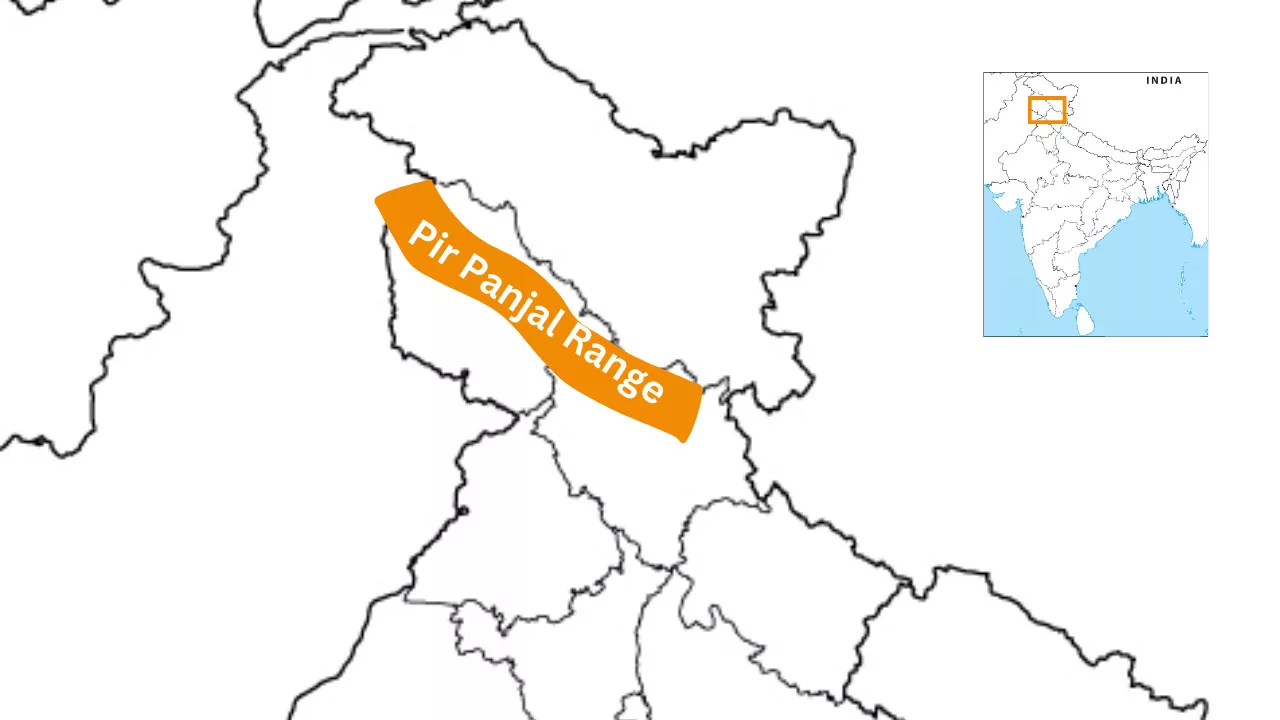
Introduction to Pir Panjal Range
- Natural divide impacting Beas, Ravi, and Chenab rivers
- Geological significance in shaping river courses
The Pir Panjal Range, holds a pivotal role as a natural barrier, influencing the courses of the Beas, Ravi, and Chenab rivers. This geographical feature plays a crucial role in shaping the region’s hydrography.
Geographical Features
- Distinct from the Himalayas
- Chain of peaks from Kishanganga Gorge to Deo Tibba
- Spans Jammu & Kashmir and Himachal Pradesh
Diverging from the Himalayas, the Pir Panjal Range forms a majestic chain of peaks, stretching from the Kishanganga gorge to Deo Tibba. This geographical wonder spans across the states of Jammu & Kashmir and Himachal Pradesh. Extending from the Kishanganga gorge, the range meets the Great Himalayan range at Deo Tibba in Himachal Pradesh.
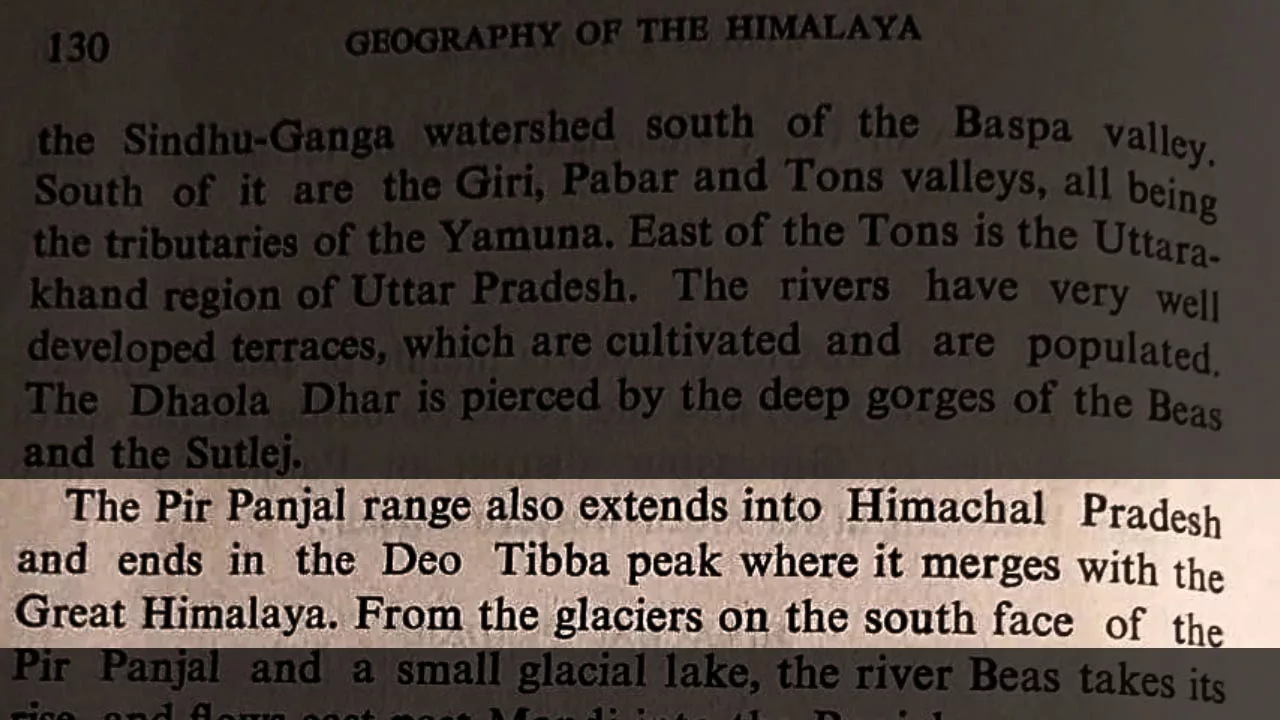
Ridges and Formations
- Higher ridges between Shivalik and Pir Panjal
- Prominent Ranjoti Ridge is composed of limestones
Amidst the higher ridges connecting Shivalik and Pir Panjal, the Ranjoti Ridge stands out with its striking composition of limestones, adding to the distinct topography of the region.
Structural Differences from the Himalayas
- Relatively younger formation
- Elevation during the Pleistocene period
- Geological impact on Jhelum River, forming Karewa Lake
In geological terms, the Pir Panjal Range is comparatively younger, having risen to its current stature during the Pleistocene period. This elevation brought about significant geological shifts, including the creation of Karewa Lake by the Jhelum River.
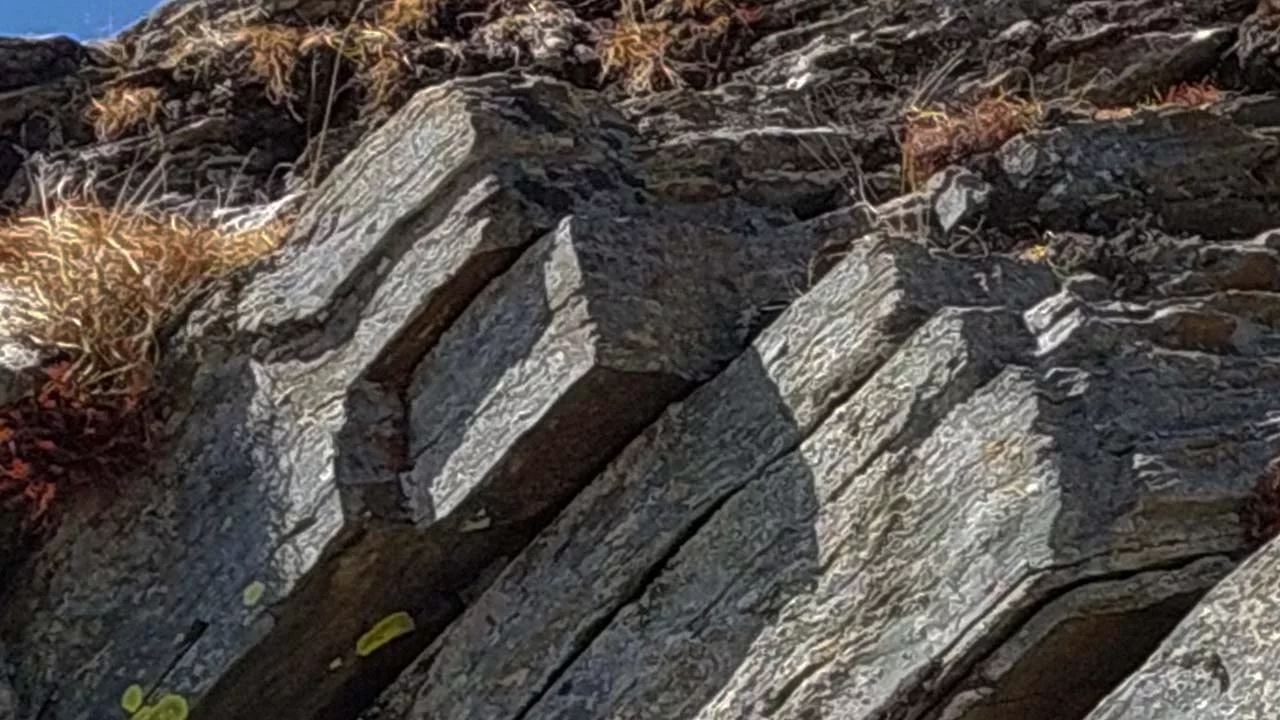
Geological Features
- Abundance of agglomerate slates and volcanic rocks
- Result of extensive volcanic activity
- Presence of Karewas due to deposition in the drained lake’s bottom
The Pir Panjal Range boasts an abundance of agglomeratic slates and volcanic rocks, a testament to the region’s history of extensive volcanic activity. The formation of Karewas, deposited in the drained lake’s bottom, adds an intriguing geological dimension to the landscape.
Glacial History
- Extreme cold during the glacial era
- Formation of a sizable glacier
- Moraine material on northern slopes, gently sloping towards Kashmir Valley
- Extremely rocky slopes to the south
Having weathered the extreme cold of the glacial era, the Pir Panjal Range witnessed the formation of a substantial glacier. The moraine material left on its northern slopes, gently sloping towards the Kashmir Valley, contrasts sharply with the rugged and rocky terrain to the south.

Peaks of Pir Panjal Range
In the pristine expanse of the Pir Panjal Range in Himachal Pradesh, the peaks of Kullu District stand as towering sentinels, each with its unique allure.
Shikar Beh, Mukar Beh, and Manali Peak command attention with their majestic summits, offering breathtaking panoramic views of the surrounding landscapes.
With their distinct profiles, Ladakhi Peak and Shiti Dhar Peak contribute to the mesmerizing skyline, creating a spectacle for avid mountaineers and nature enthusiasts alike.
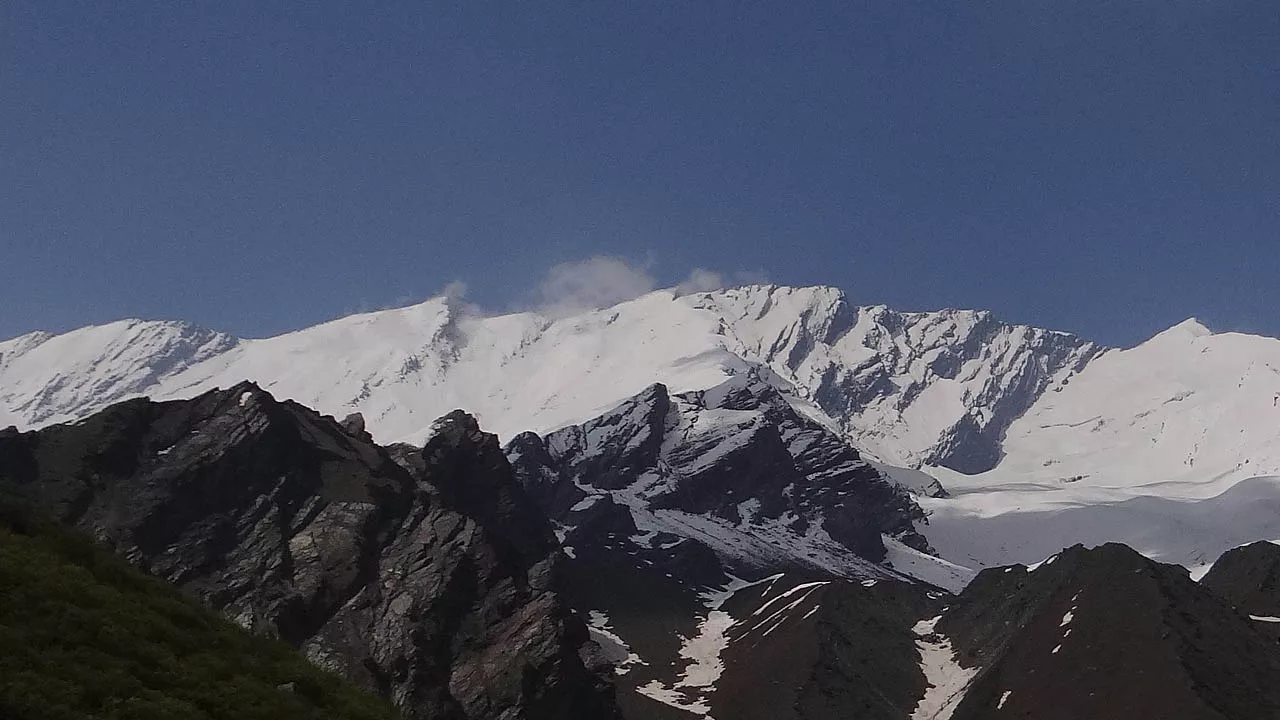
The renowned Friendship Peak, true to its name, beckons climbers to forge bonds with the lofty heights it presents.
Venturing into the further east of the range reveals the grandeur of Indrasan and Deo Tibba, two iconic peaks that dominate the region’s skyline.
Indrasan, with its formidable elevation, showcases the might of nature, while Deo Tibba stands as a testament to the geological forces that shaped the Pir Panjal Range.
Together, these peaks form a celestial tapestry, inviting adventurers to explore the heights and immerse themselves in the awe-inspiring beauty of the Himachal Himalayas.
- Learn more about Pir Panjal Range Peaks

Glacier of Pir Panjal Range
Nestled within the embrace of the Pir Panjal Range, the glaciers in this pristine region stand as frozen witnesses to the relentless passage of time.
The Duhangan Glacier, also known as the Deo Tibba Glacier, graces the landscape with its icy splendor, epitomizing the raw beauty of high-altitude wilderness.
Bhadal Glacier, a majestic ice expanse, adds to the glacial ensemble, silently shaping the geography with its frozen rivers of time.

Hamta Glacier, a testament to the region’s glacial history, captivates with its icy intricacies, offering a glimpse into the geological tapestry of the Pir Panjal.
Lastly, Beas Kund Glacier, cradled in the heart of the range, serves as a source of the Beas River, symbolizing the life-giving force that emanates from these frozen giants.
Together, these glaciers paint a portrait of resilience and majesty, embodying the timeless allure of the Pir Panjal’s icy realms.
- Learn more about Pir Panjal Range Glaciers
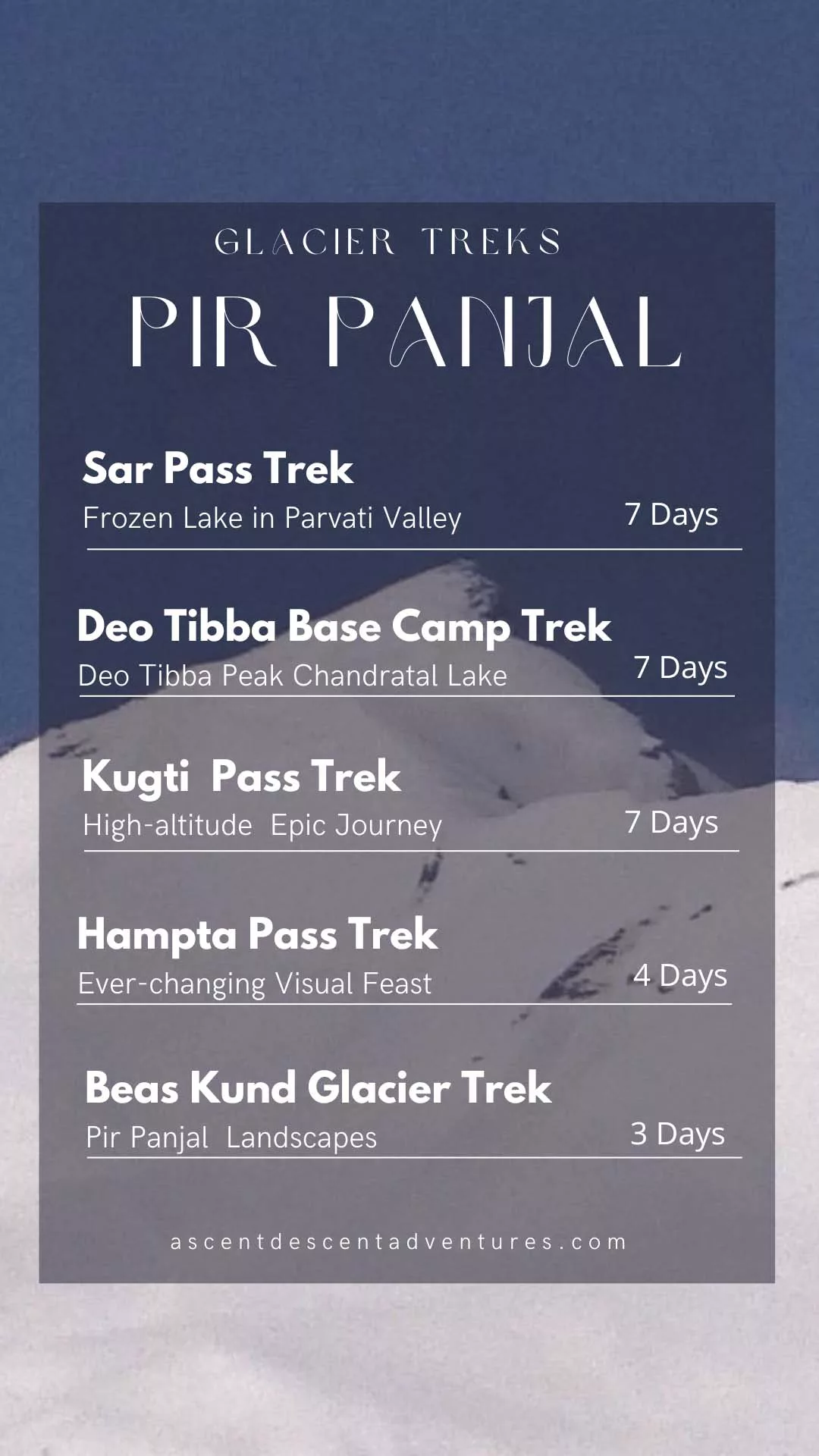
Glacier Treks
Hiking on glaciers in the Pir Panjal Range reveals an enthralling mosaic of icy marvels and difficult landscapes.
The Sar Pass Trek provides daring explorers with an exciting journey and amazing vistas as it winds through old forests and snow-covered stretches.
Trekkers are invited to view the magnificence of the Pir Panjal’s icy worlds through the Deo Tibba Base Camp Trek, which tests their endurance and ability against the backdrop of the Duhangan Glacier.
The Kugti Pass Trek is a high-altitude excursion that travels through pristine landscapes and enters the middle of the range, revealing the area’s raw beauty.
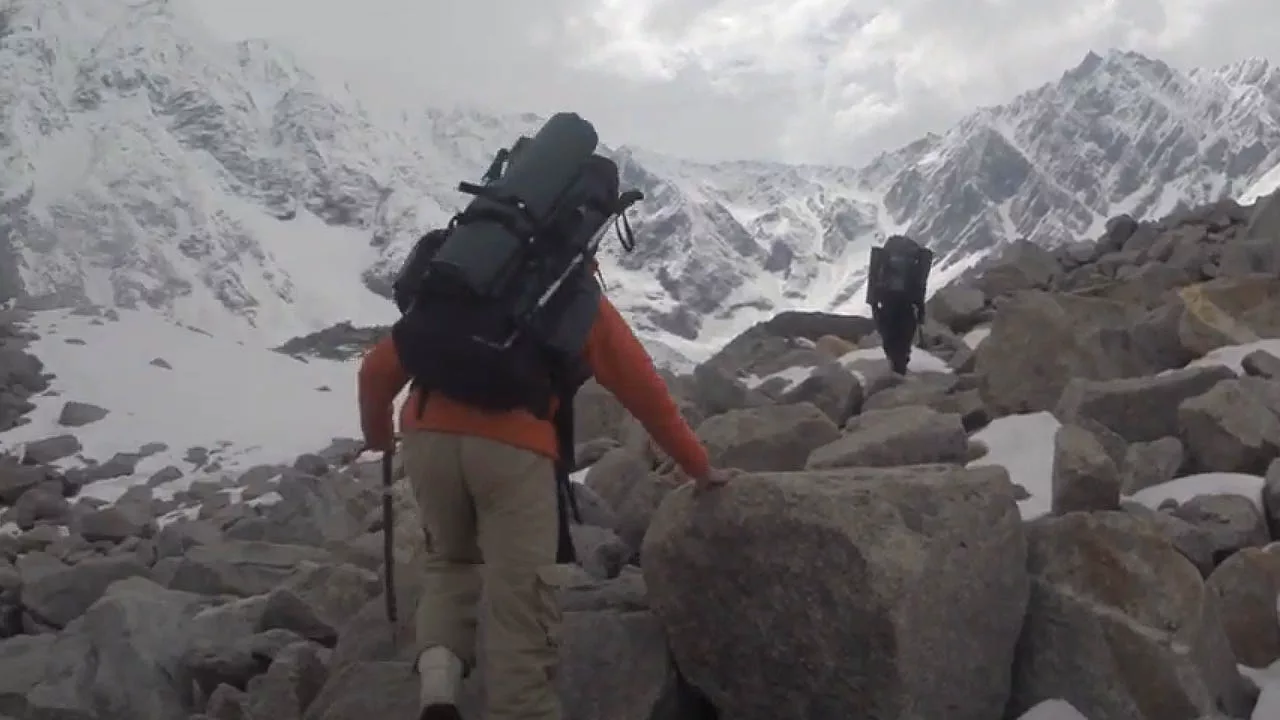
The Hampta Pass Trek is an exciting journey that opens a portal to the glacial wonders of the Pir Panjal, passing through icy valleys and alpine meadows.
The Beas Kund Glacier Trek, which leads to the Beas River’s source, on the other hand, promises an immersive experience that combines adventure with the Himalayas’ ethereal allure.
These glacier hikes provide a unique opportunity to commune with nature’s icy marvels, perfectly encapsulating the appeal of the Pir Panjal.
- Learn more about Pir Panjal Range Glacier Treks
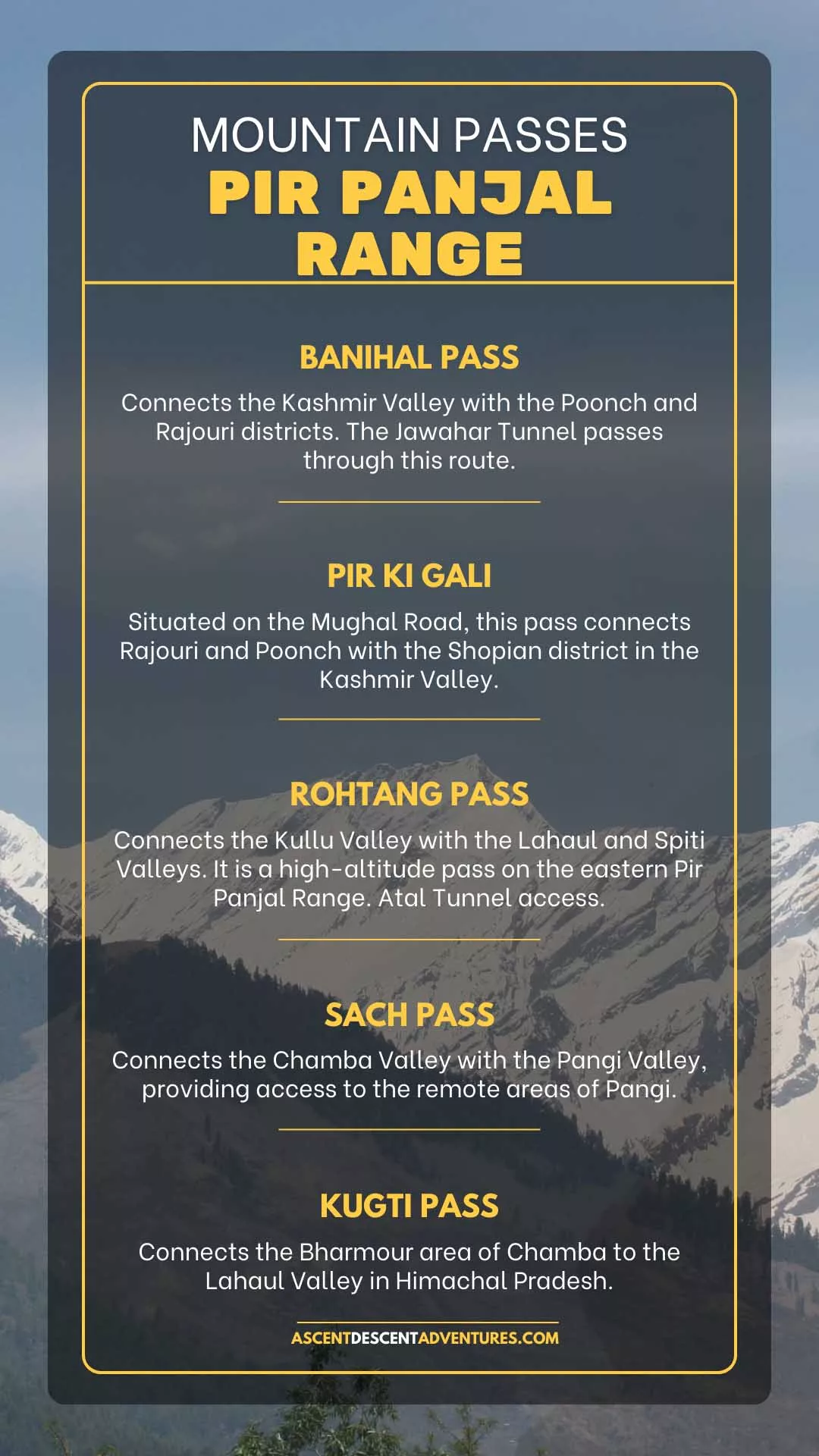
Passes of Pir Panjal Range
A network of high mountain passes emerges within the imposing embrace of the Pir Panjal Range, each testament to centuries of trade, migration, and exploration.
The Banihal Pass is a historic gateway that offers an amazing route through the untamed vastness of the Pir Panjal, connecting the Kashmir Valley to the outside world.
With its rich history, Pir Ki Gali is a symbol of the region’s cultural fusion and welcomes visitors to walk its ancient paths.

The famous Rohtang Pass provides access to the Lahaul and Spiti valleys, revealing a scene of snow-capped peaks and alpine meadows.
The difficult Sach Pass trek unveils a lesser-known aspect of the Pir Panjal that is alluring with its untainted landscape.
Finally, Kugti Pass, a high-altitude escapade, beckons adventurers with its panoramic vistas and a gateway to the remote Pangi Valley.
These passes, etched in the Pir Panjal’s grandeur, form conduits to the past and the majestic present landscapes.
- Learn more about Pir Panjal Range Mountain Passes
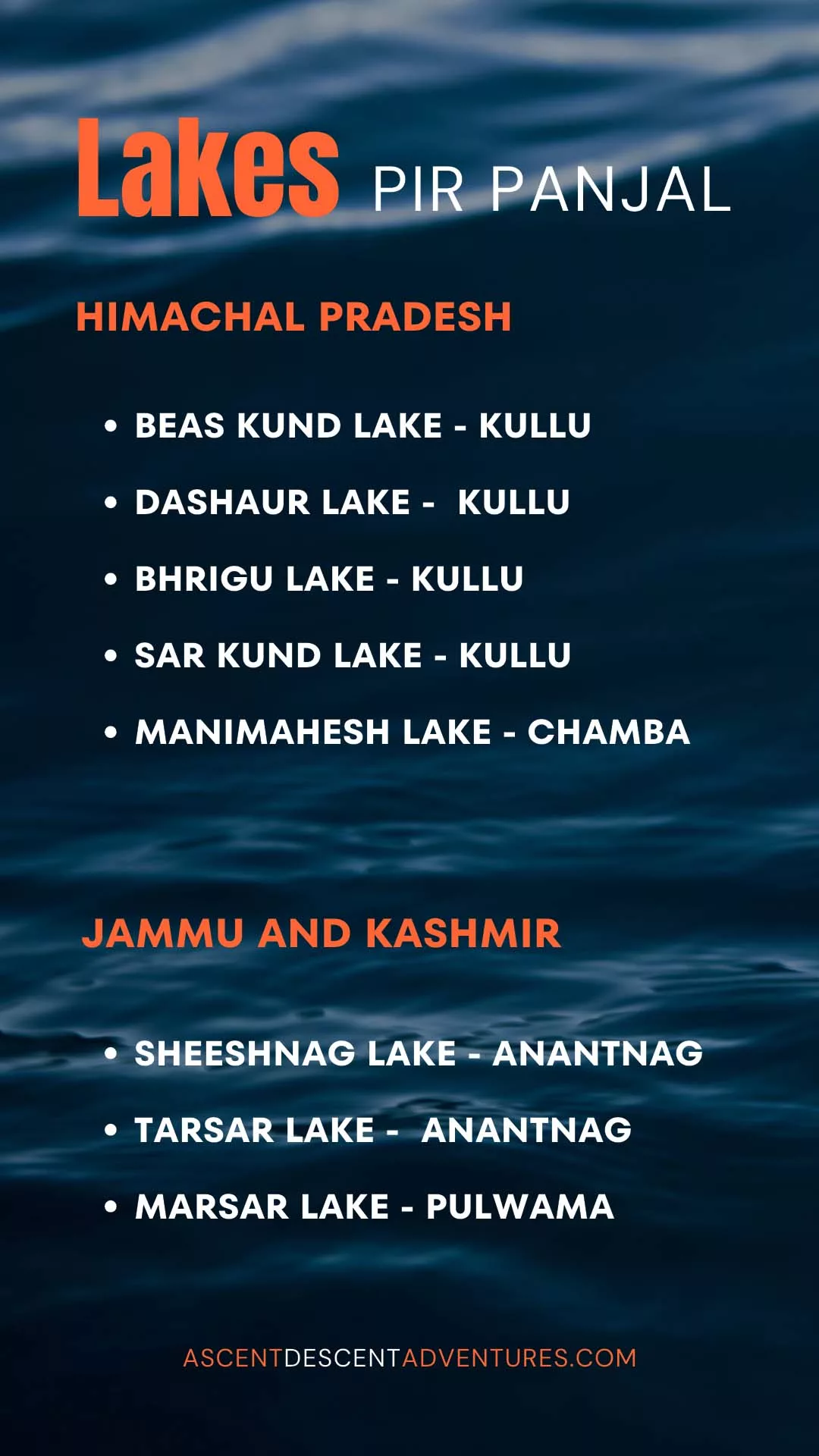
Lakes of Pir Panjal Range
Nestled like glistening jewels amidst the majestic Pir Panjal Range, the lakes of this breathtaking region stand as serene reflections of nature’s artistry.
In Kullu, the ethereal Beas Kund Lake graces the landscape, its crystal-clear waters mirroring the surrounding peaks. Dashaur Lake, a hidden gem, adds to the Kullu’s pristine allure, while Bhrigu Lake enchants with its high-altitude splendor.
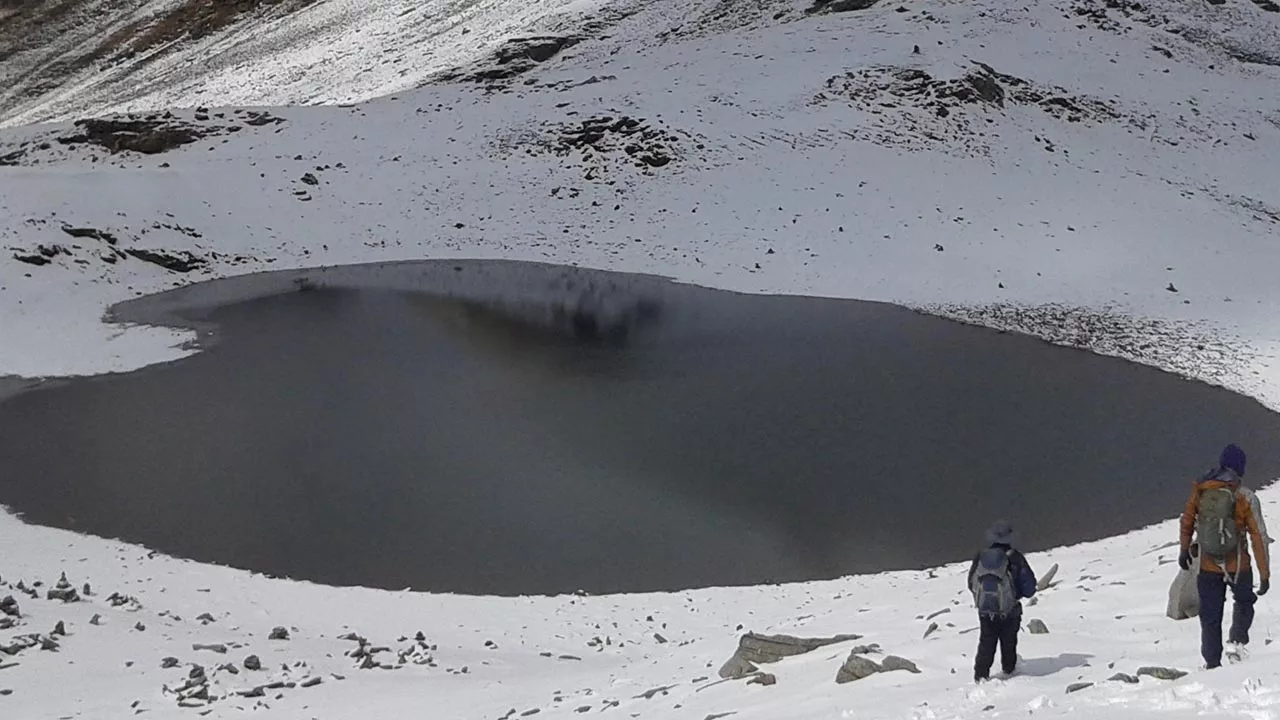
Sar Kund Lake, nestled in the heart of Kullu, invites tranquility seekers to its secluded shores.
In Chamba, Manimahesh Lake exudes a sacred charm, drawing pilgrims and nature enthusiasts alike.
Jammu and Kashmir boast the enchanting Sheeshnag Lake in Anantnag, along with the picturesque Tarsar Lake and Marsar Lake in Pulwama. Each contributes to the region’s reputation as a haven of pristine mountain lakes.
These waterbodies encapsulate the Pir Panjal’s diverse beauty, inviting exploration and contemplation alike.
- Learn more about Pir Panjal Range Lakes

Flora and Fauna
The Pir Panjal Range, located in the Himalayas, has a complex ecology rich in distinct flora and animals. The environment is dominated by towering deodar and blue pine trees, mixed with vivid rhododendron flowers and Himalayan Blue Poppies in alpine meadows.
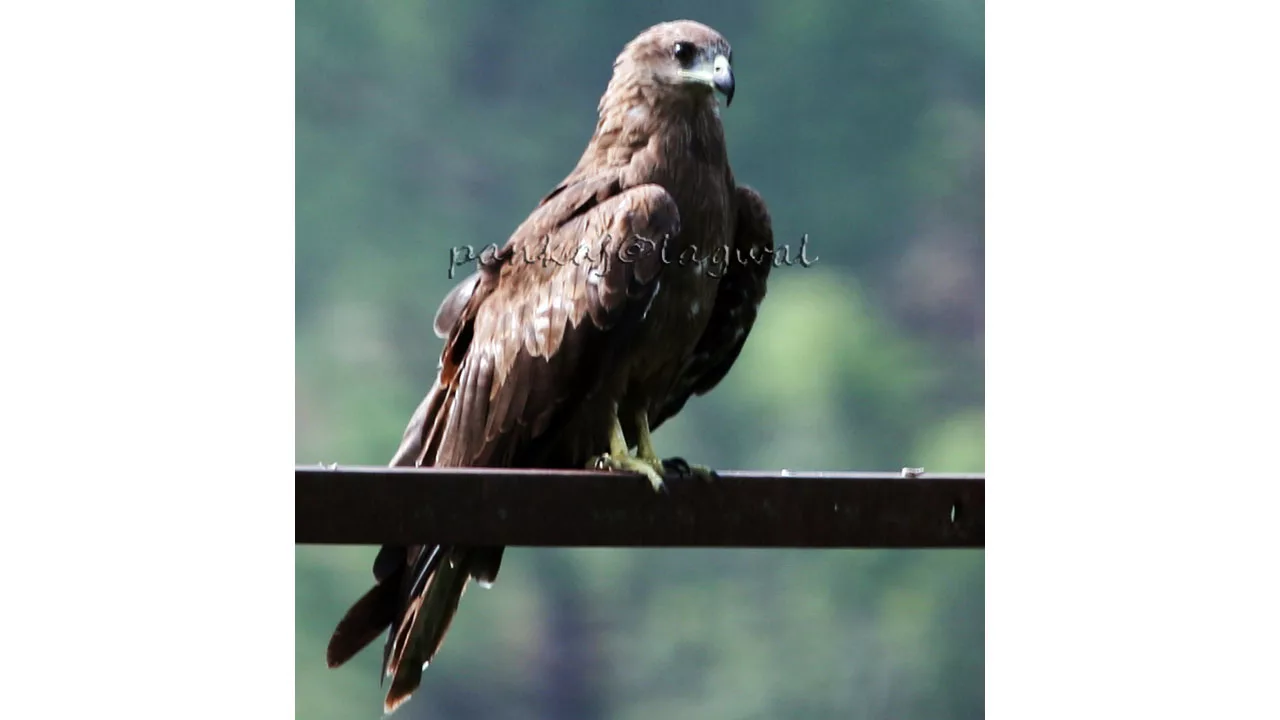
This diverse ecosystem is home to notable animals such as the Himalayan Brown Bear, Tahr, and the elusive Snow Leopard. Musk Deer graze in the woodland, while the Himalayan Griffon flies overhead.
The Pir Panjal Range, with its stunning peaks and valleys, provides a habitat for diverse species, adding to the region’s ecological significance and biodiversity.
- Learn more about Himalyan Endangered Species